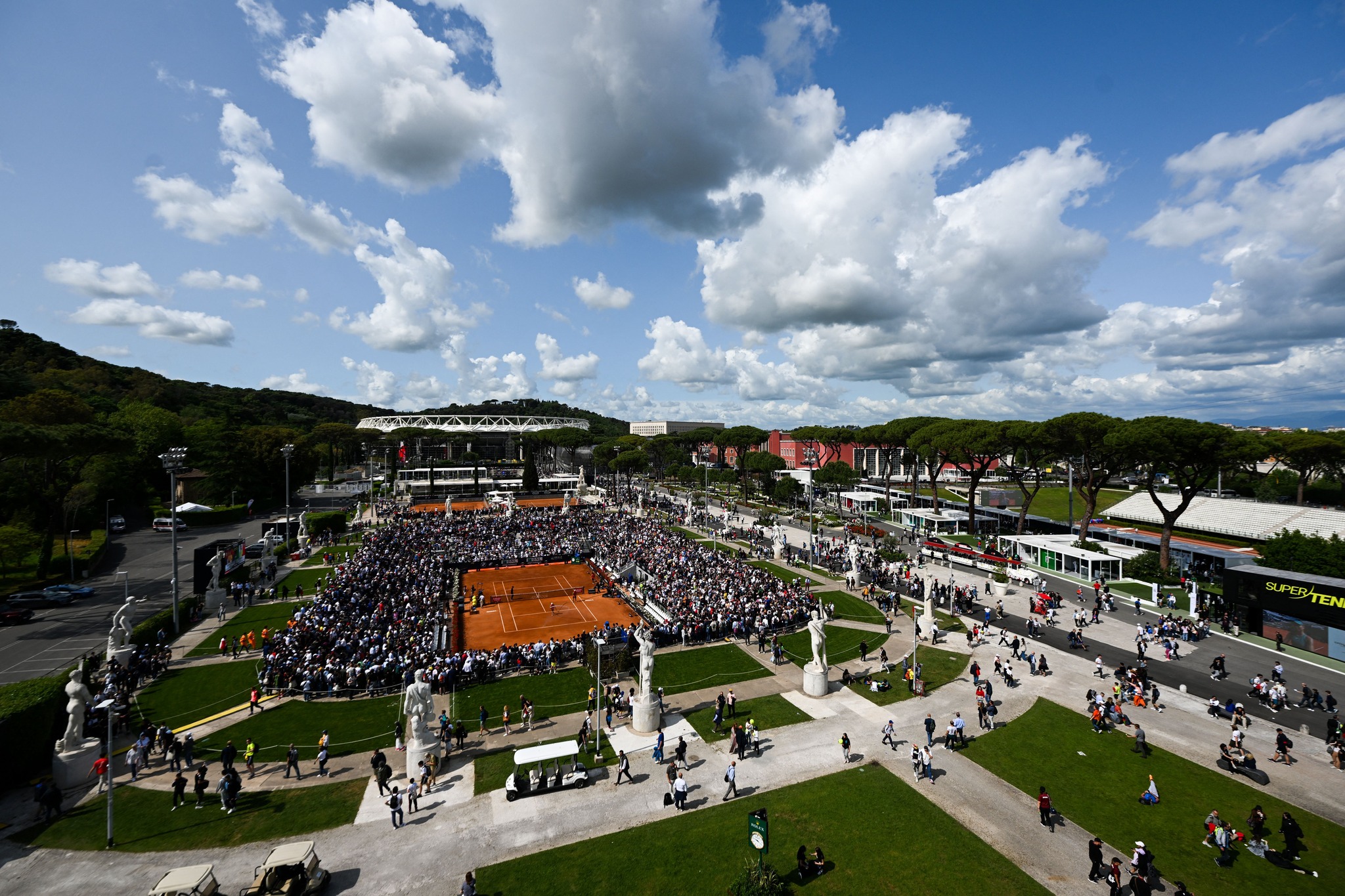Amid the ancient splendor of Rome, where history whispers from every corner, the Internazionali BNL d’Italia emerges each spring as a dazzling spectacle of modern athleticism and traditional Italian charm. Held at the iconic Foro Italico, a sports complex that is a masterpiece of Fascist architecture, this prestigious tennis tournament is not just a competition but a celebration of elegance, culture, and the enduring spirit of Italy.
The tournament, which began in 1930, has grown from its humble beginnings in Milan to become one of the most anticipated stops on the ATP and WTA Tours. Known colloquially as the Italian Open, it is one of the few elite clay court tournaments leading up to the French Open, attracting the crème de la crème of the tennis world. The Foro Italico’s red clay courts, set against a backdrop of marble statues and lush greenery, offer a playing experience steeped in drama and history.

The event’s evolution mirrors Italy’s passion for sport and its knack for infusing beauty into every endeavor. The main court, Stadio Centrale, rebuilt in 2010, holds over 10,000 spectators and transforms each match into a grand spectacle. The smaller Stadio Pietrangeli, adorned with classical statues, offers a more intimate yet equally historic setting. These arenas do not just host matches; they create a coliseum-like atmosphere, where glory and artistry are pursued with equal fervor.
The Italian Open is as much a social and cultural event as it is a sports competition. It exudes a distinctly Italian flair, characterized by high fashion, gourmet cuisine, and an array of entertainment options that captivate visitors. The tournament has become a meeting place for the who’s who of various industries, from film stars to fashion icons, who come to revel in the sport and the luxurious setting. The event’s allure is undeniable, combining top-tier tennis with the opulence and charm that only Rome can offer.
Moreover, the tournament has been a battleground for some of the most memorable matches in tennis history, contributing to fierce rivalries and unforgettable sportsmanship. Each stroke and strategy played out on the clay is a testament to the tournament’s high competitive standards and its role in shaping the careers of tennis legends.
The economic impact of the Internazionali BNL d’Italia on Rome is also significant. It draws tourists from around the globe, contributing to the local economy through hospitality, dining, and retail. Hotels flourish with guests, restaurants buzz with energy, and shops enjoy the patronage of international visitors, making the tournament a boon for local businesses.
Looking to the future, the Italian Open continues to innovate and adapt. Recent expansions have extended the event to span 12 days, paralleling other major Masters 1000 events, allowing for a richer fan experience and greater engagement with the sport. Plans for further enhancements to the venue and the tournament experience promise to keep the event at the forefront of the tennis world and Rome’s cultural calendar.
In essence, the Internazionali BNL d’Italia is more than just a tennis tournament; it is a vibrant festival celebrating the rich tapestry of Italian life and the timeless appeal of sport. Here, the past and the present merge in a dance as rhythmic as the game played on the clay courts, under the watchful eyes of history’s greatest artists and emperors. For those who visit, whether as spectators or players, the Italian Open remains an unforgettable encounter with the soul of Italy.
Photos from the official Facebook Page

